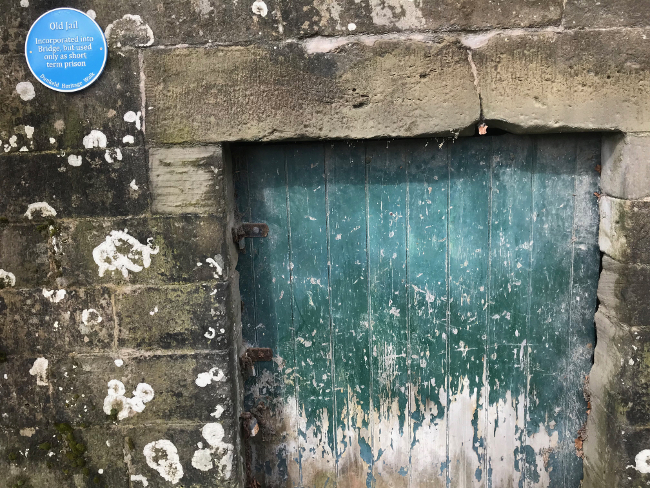Our Legal Heritage: Dunkeld jail
 In the latest of our occasional series, Graham Ogilvy discovers a curious legal relic in Dunkeld.
In the latest of our occasional series, Graham Ogilvy discovers a curious legal relic in Dunkeld.
What would the Howard League make of it? The strange door into the foundations of Telford’s famous bridge across the Tay in Dunkeld is painted an innocuous blue but the heavy iron locks lend a sense of foreboding.
A nearby plaque informs the inquisitive traveller that the door into the dank, damp and windowless foundations is, in fact, the former Dunkeld jail. Miscreants would certainly ‘cool off’ in the freezing black hole before being carted off to Perth prison – which, contrary to popular belief, was not built by Napoleonic prisoners of war although the ragged French slaves who built so many of the stout walls, ha-ha dykes and cattle tunnels on the great estates of Perthshire and Angus did drain the site of the prison and lay some of its foundations.
The cell in Telford’s bridge was not a new idea, a previous bridge had also boasted a jail in which captured caterans, highland rustlers and sheep stealers would be held before being hung by the roadside and their bodies left in chains on the orders of the Bishop of Dunkeld pour décourager les autres.
When it opened in 1809, Telford’s Bridge was the Edinburgh Tram debacle of its day – although no equivalent of Lord Hardie was appointed to determine how the estimated original cost of £15,000 soared to £40,000.
The jail may have come in handy in during the frequent riots which followed the decision of the 4th Duke of Atholl to impose tolls. These often saw the toll gates thrown into the river and, in 1868, the authorities were compelled to send in the Black Watch to restore order.
The tolls were finally abolished in 1879 when the bridge was adopted by the County Council.








